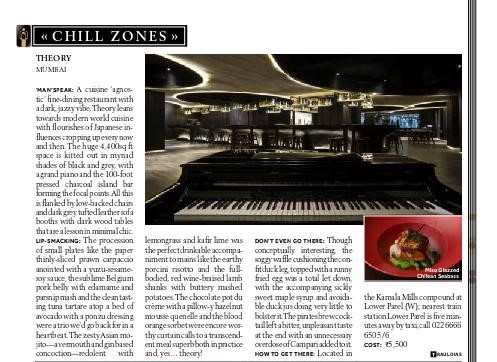By Raul Dias
The enchanted realm that the elusive and expensive black summer truffle inhabits is one that is filled with all the things I am obsessed with. Gamboling through the woods on a nippy morning. Canine company. And that unmatched feeling of serendipity deliciously lurking somewhere near…
So, spurred on by the Scandinavia-driven foraging craze that has ensnared the culinary world, on my recent summer holiday to Italy I donned my hiking boots and set off on a black summer truffle hunt in the fog-saturated hills of Bagno a Ripoli, a little south of Florence. I had signed up for an Airbnb Trips’ immersive truffle hunting experience, guided by one of Italy’s best truffle hunters Giulio Benuzzi and his six-year-old Lagotto Romagnolo breed of truffle sniffing dog called Eda.
Over the course of the next three hours as Eda sniffed, scratched and dug her way through an impressive find of five knobbly black truffles that morning, I got a crash course in all things deliciously truffle or tartufi as they are called in Italian. Being the start of summer truffle hunting season in Italy, May sees the foraging for the Scorzone variety of the black truffle. The dormant spores of which prefer to anchor themselves in limestone-rich soil that this region of Italy is blessed with.
Lesson number one: dogs are the best truffle hunters and this is due to their strong olfactory senses to sniff out the buried truffle. And more so the Lagotto Romagnolo breed who are retrievers by nature. Right up to 1970, sows were used to hunt truffles because truffles apparently, when ripe, produce a chemical almost identical to a type of pheromone found in a male pig’s saliva! But as pigs love to eat truffles, and dogs not so much, the latter’s skills have come to the fore now.
The topography too is very important, as the Scorzone truffle will most often than not be found in the shade of hazelnut, chestnut, elm and poplar trees. But in this case, it was an oak tree beneath which our bounty lay. Interestingly, I also learnt that truffles can’t be farmed or cultivated in any way or form. Newly grown truffles are often found in spots where one last foraged from. This is because the new truffle spores from the previous ones.
No wonder then that a kilogram of black truffles sells for as much as Rs 573,000 at gourmet stores the world over. Thus, making the Scorzone truffle second only to the French Périgord truffle—the world’s most expensive truffle variety along with the Italian white called the Piedmont or Alba truffle. How’s that for extravagant tastes?
(This column first appeared in the 23rd July 2017 issue of The Hindu newspaper's Sunday Magazine section on page 8 http://www.thehindu.com/life-and-style/food/black-summer-truffles/article19325638.ece)
The enchanted realm that the elusive and expensive black summer truffle inhabits is one that is filled with all the things I am obsessed with. Gamboling through the woods on a nippy morning. Canine company. And that unmatched feeling of serendipity deliciously lurking somewhere near…
So, spurred on by the Scandinavia-driven foraging craze that has ensnared the culinary world, on my recent summer holiday to Italy I donned my hiking boots and set off on a black summer truffle hunt in the fog-saturated hills of Bagno a Ripoli, a little south of Florence. I had signed up for an Airbnb Trips’ immersive truffle hunting experience, guided by one of Italy’s best truffle hunters Giulio Benuzzi and his six-year-old Lagotto Romagnolo breed of truffle sniffing dog called Eda.
Over the course of the next three hours as Eda sniffed, scratched and dug her way through an impressive find of five knobbly black truffles that morning, I got a crash course in all things deliciously truffle or tartufi as they are called in Italian. Being the start of summer truffle hunting season in Italy, May sees the foraging for the Scorzone variety of the black truffle. The dormant spores of which prefer to anchor themselves in limestone-rich soil that this region of Italy is blessed with.
Lesson number one: dogs are the best truffle hunters and this is due to their strong olfactory senses to sniff out the buried truffle. And more so the Lagotto Romagnolo breed who are retrievers by nature. Right up to 1970, sows were used to hunt truffles because truffles apparently, when ripe, produce a chemical almost identical to a type of pheromone found in a male pig’s saliva! But as pigs love to eat truffles, and dogs not so much, the latter’s skills have come to the fore now.
The topography too is very important, as the Scorzone truffle will most often than not be found in the shade of hazelnut, chestnut, elm and poplar trees. But in this case, it was an oak tree beneath which our bounty lay. Interestingly, I also learnt that truffles can’t be farmed or cultivated in any way or form. Newly grown truffles are often found in spots where one last foraged from. This is because the new truffle spores from the previous ones.
No wonder then that a kilogram of black truffles sells for as much as Rs 573,000 at gourmet stores the world over. Thus, making the Scorzone truffle second only to the French Périgord truffle—the world’s most expensive truffle variety along with the Italian white called the Piedmont or Alba truffle. How’s that for extravagant tastes?
(This column first appeared in the 23rd July 2017 issue of The Hindu newspaper's Sunday Magazine section on page 8 http://www.thehindu.com/life-and-style/food/black-summer-truffles/article19325638.ece)






























